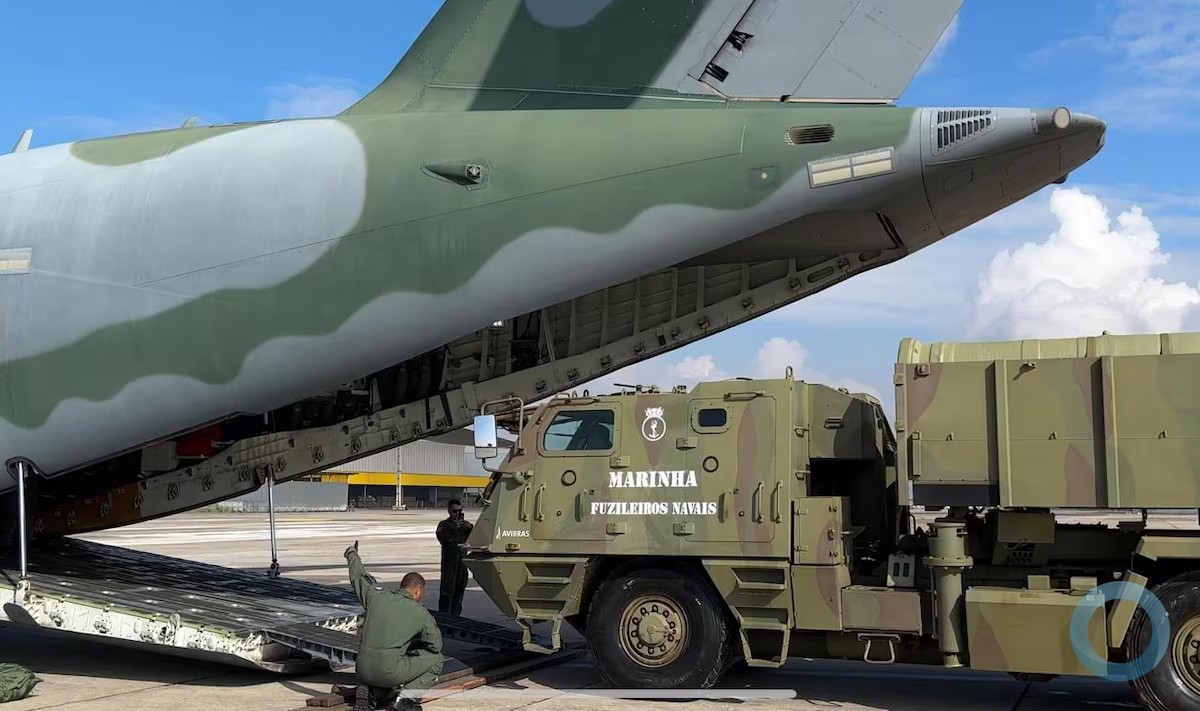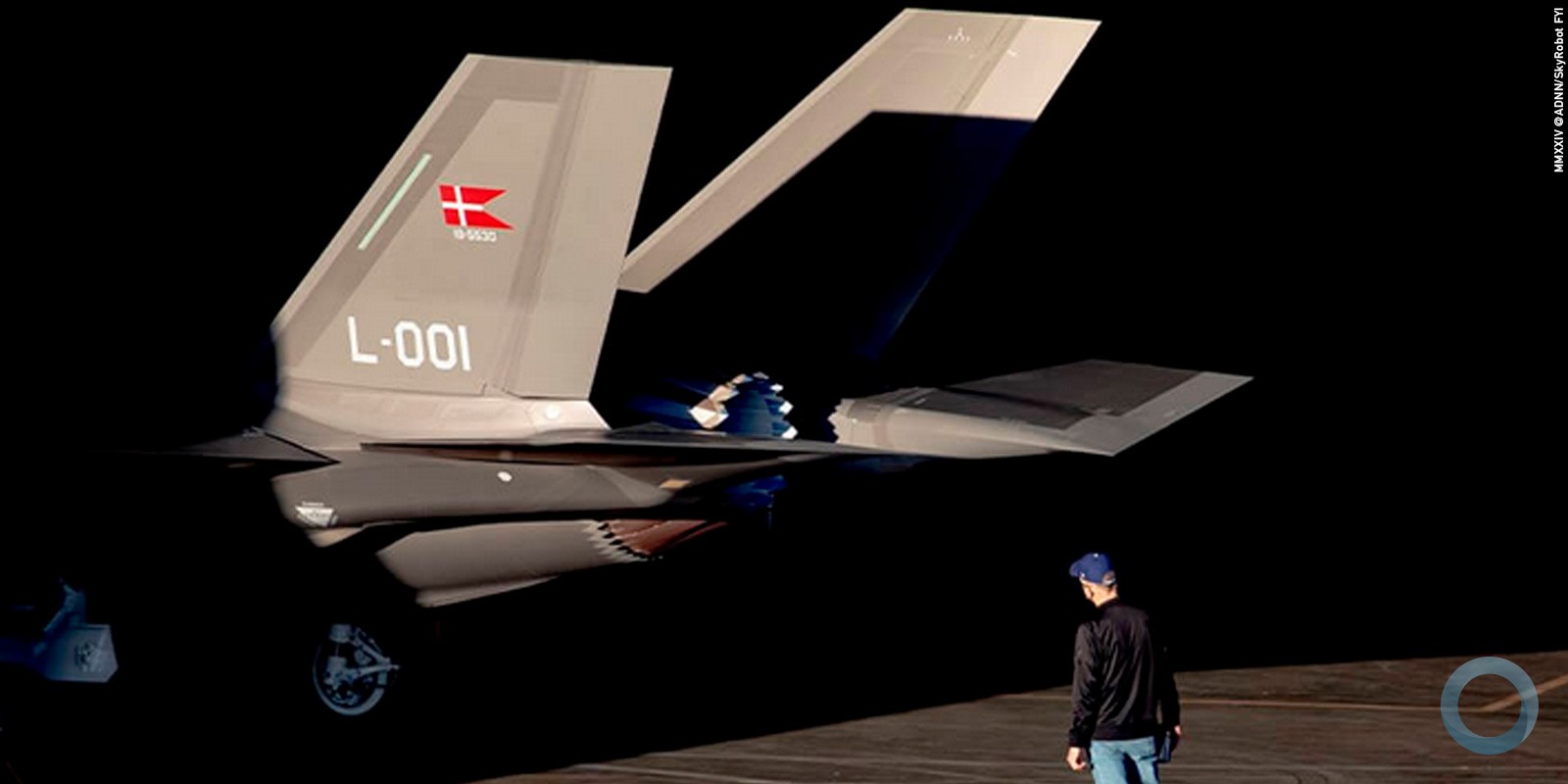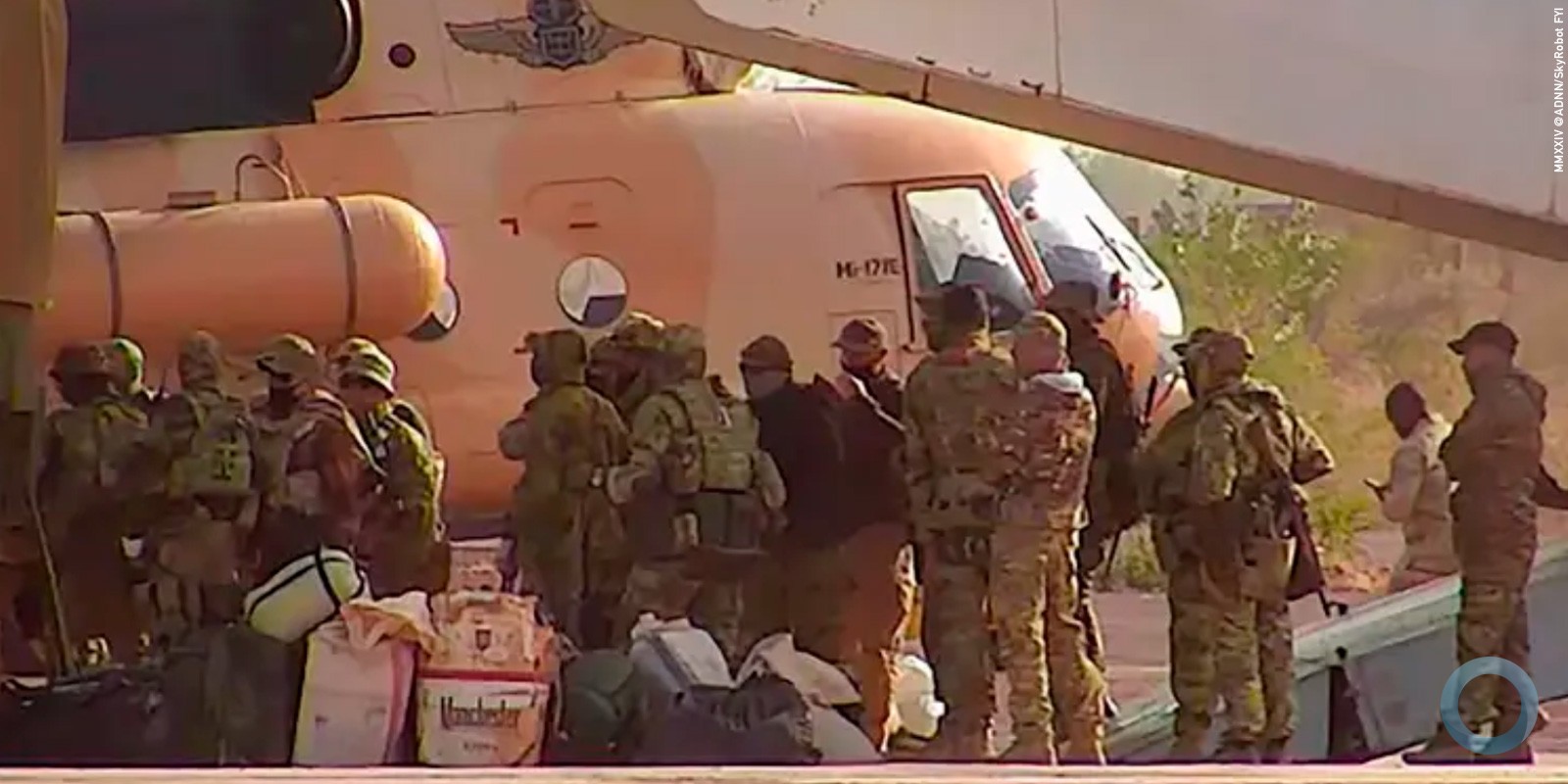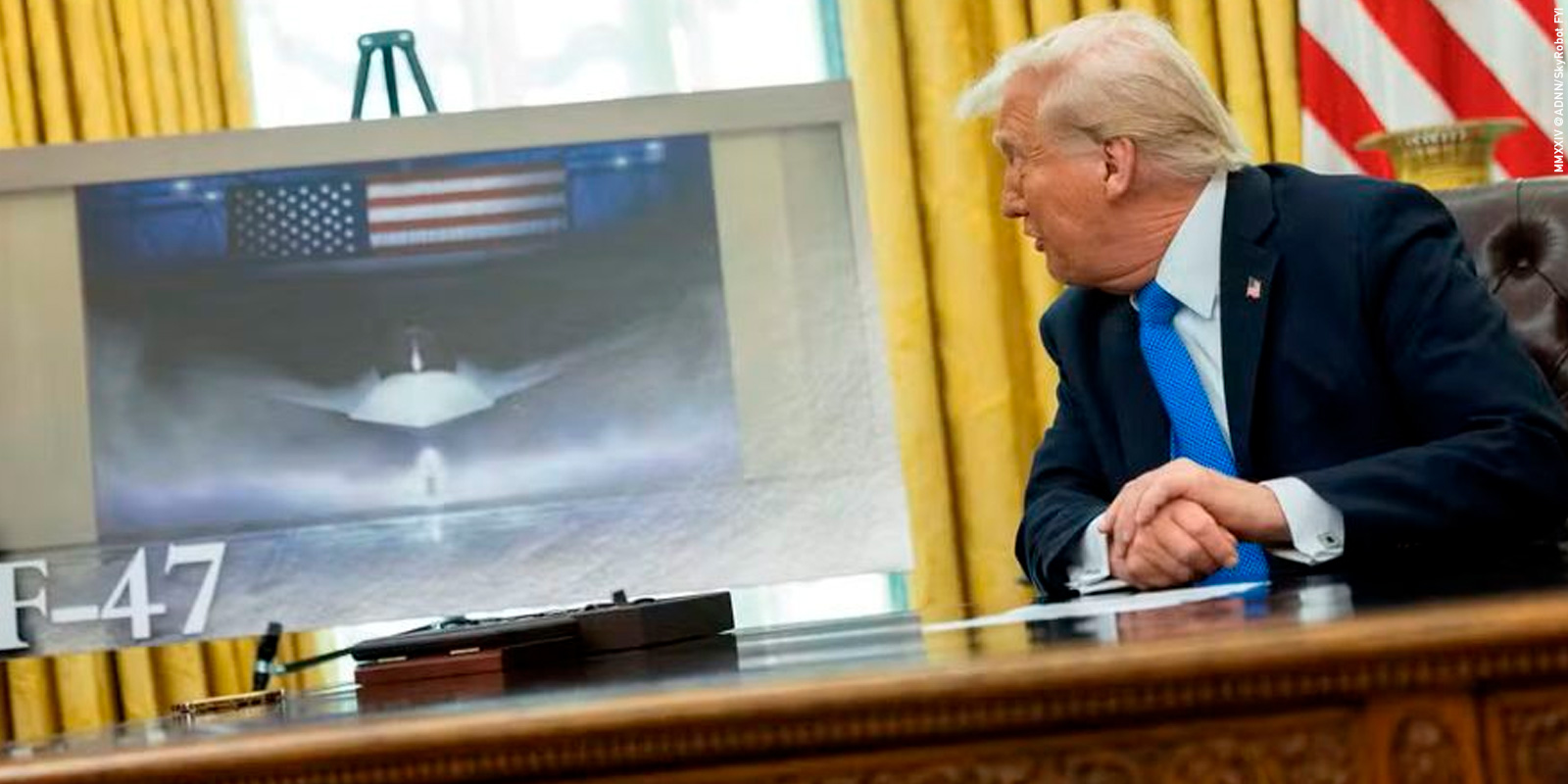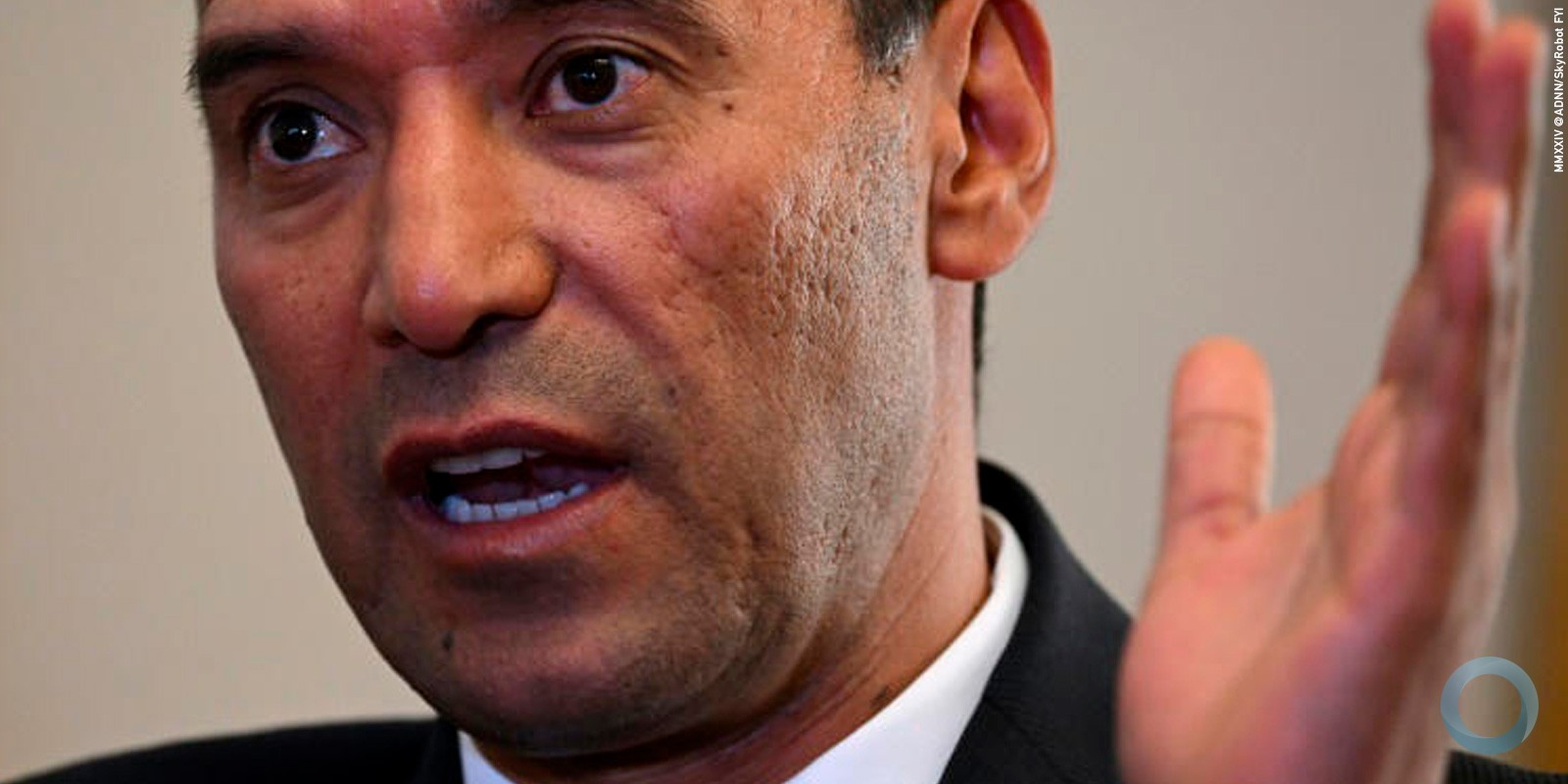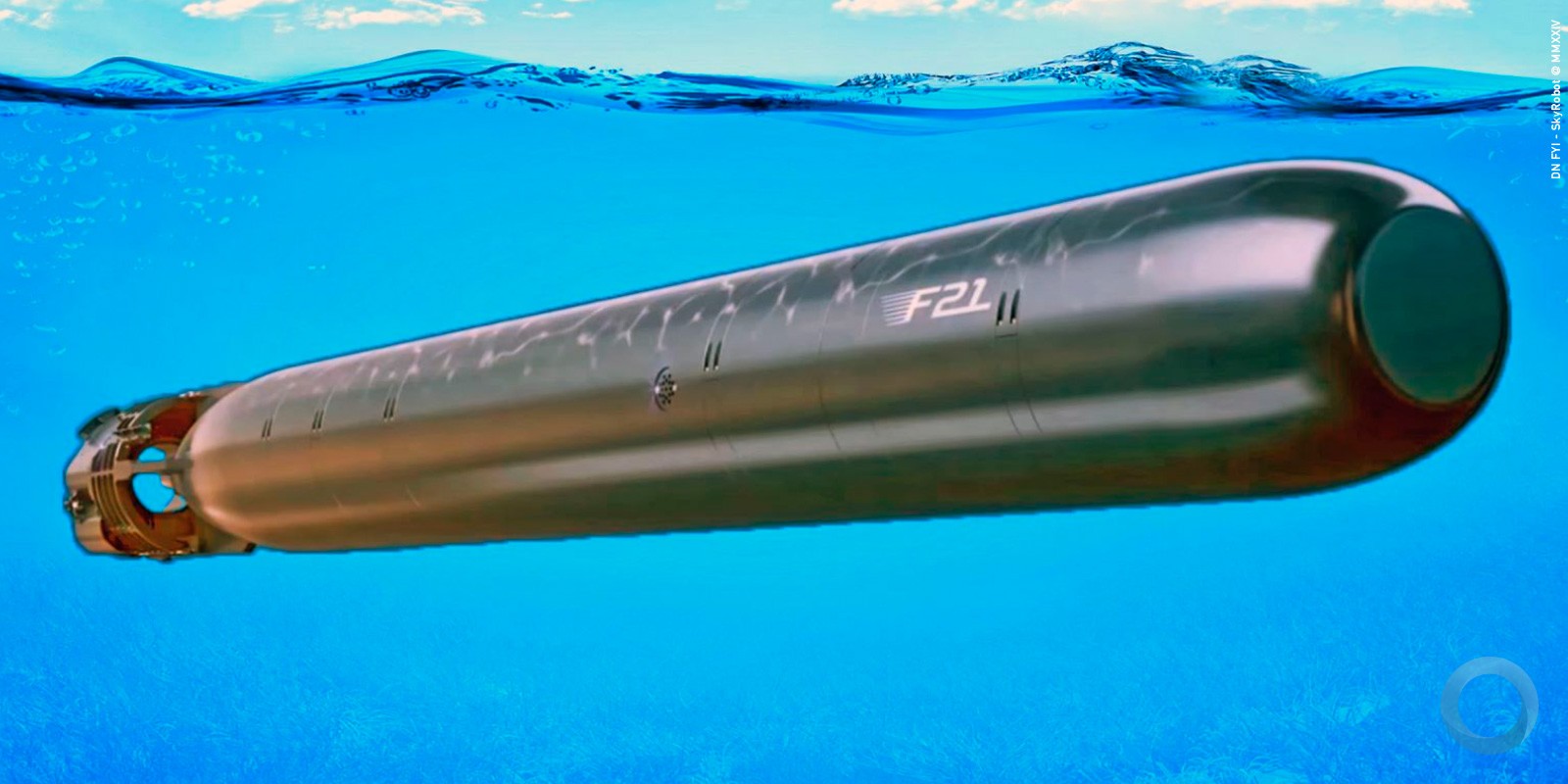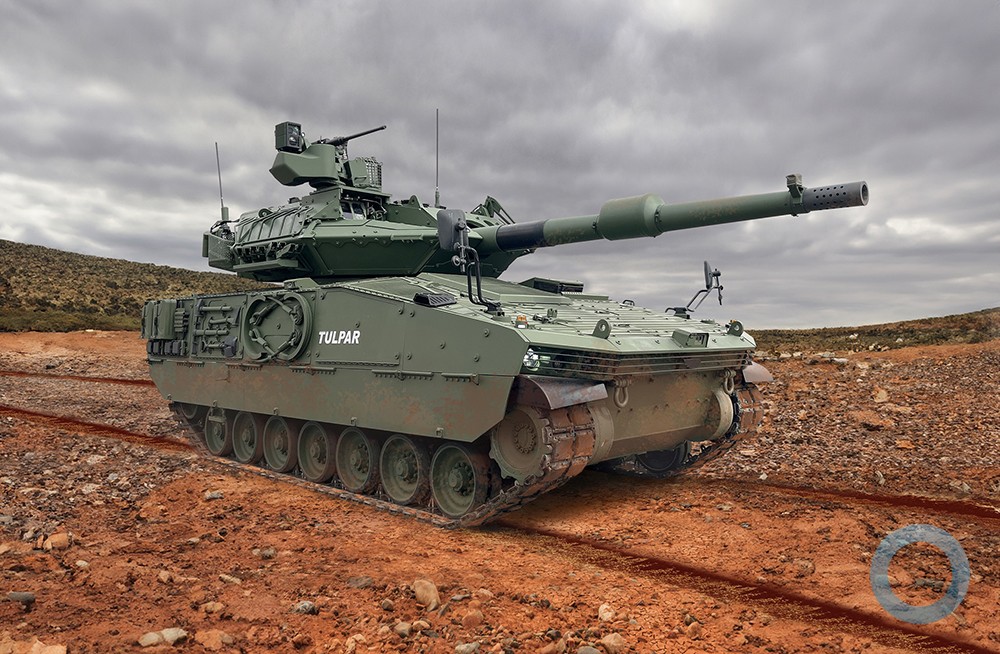Para uma nota em português acesse US Army será o menor desde a Segunda Guerra Link
As Delivered by Secretary of Defense Chuck Hagel, Pentagon Press Briefing Room, Monday, February 24, 2014
First, let me acknowledge and thank Chairman Dempsey, Vice Chairman Winnefeld, our chiefs, our secretaries, who are here, as well as our Comptroller and our Acting Deputy Secretary of Defense Christine Fox for the work that they have put in over the few months in particular to get us to this point, where we have a budget that we are going to present to Congress next week.
I want to talk a little bit about that today. Chairman Dempsey will also add his remarks, but I am very grateful, and I know that President Obama is very grateful, to these men and women who have spent an awful lot of time – and the people they represent and their services – in putting this together.
I particularly want to note that the Comptroller, Bob Hale, this will be his last budget unless we call him back into duty after he goes to find an island somewhere and doesn’t return calls. But I am particularly appreciative of his willingness to stay through this budget which was not an easy task for Bob Hale. You all know the kind of service that he has given this country and this department for many, many years. And to Bob Hale, thank you, and to all your team down there, we are grateful.
Today I am announcing the key decisions I have recommended to the President for the Defense Department’s Fiscal Year 2015 budget and beyond.
These recommendations will adapt and reshape our defense enterprise so that we can continue protecting this nation’s security in an era of unprecedented uncertainty and change. As we end our combat mission in Afghanistan, this will be the first budget to fully reflect the transition DoD is making for after 13 years of war – the longest conflict in our nation’s history.
We are repositioning to focus on the strategic challenges and opportunities that will define our future: new technologies, new centers of power, and a world that is growing more volatile, more unpredictable, and in some instances more threatening to the United States.
The choices ahead will define our defense institutions for the years to come. Chairman Dempsey and I worked in a pragmatic and collaborative way to build the balanced force our nation must have for the future. I worked closely with the Chairman, Vice Chairman, Service Secretaries, and Service Chiefs in developing these recommendations, in a process that began with last summer’s Strategic Choices and Management Review. I also want to recognize today the senior enlisted leaders in each of the services for their contributions and their involvement and their leadership and what they continue to do every day for our country, but in particular their help and input in crafting this budget.Our recommendations were guided by an updated defense strategy that builds on the President’s 2012 Defense Strategic Guidance. As described in the upcoming Quadrennial Defense Review report, this defense strategy is focused on:
- Defending the homeland against all strategic threats;
- Building security globally by projecting U.S. influence and deterring aggression; and;
- Remaining prepared to win decisively against any adversary should deterrence fail.
To fulfill this strategy DoD will continue to shift its operational focus and forces to the Asia-Pacific, sustain commitments to key allies and partners in the Middle East and Europe, maintain engagement in other regions, and continue to aggressively pursue global terrorist networks.
Our reviews made two new realities very clear:
- First, the development and proliferation of more advanced military technologies by other nations that means that we are entering an era where American dominance on the seas, in the skies, and in space can no longer be taken for granted.
- Second, defense spending is not expected to reach the levels projected in the five-year budget plan submitted by the President last year.
Given these realities, we must now adapt, innovate, and make difficult decisions to ensure that our military remains ready and capable – maintaining its technological edge over all potential adversaries. However, as a consequence of large budget cuts, our future force will assume additional risks in certain areas.
In crafting this package, we prioritized DoD’s strategic interests and matched them to budget resources. This required a series of difficult choices:
- We chose further reductions in troop strength and force structure in every military service – active and reserve – in order to sustain our readiness and technological superiority, and to protect critical capabilities like Special Operations Forces and cyber resources.
- We chose to terminate or delay some modernization programs to protect higher priorities in procurement, research, and development.
- And we chose to slow the growth of military compensation costs in ways that will preserve the quality of the all-volunteer force, but also free up critical funds needed for sustaining training, readiness, and modernization.
Fiscal Context and Future Spending Assumptions
Before describing our specific recommendations, let me address the fiscal realities and assumptions behind our decision-making.
On March 1, 2013 – one year ago this week – steep and abrupt automatic spending cuts were imposed on DoD and other agencies across the government under the mechanism of sequestration. For DoD, these irresponsible cuts amounted to $37 billion last fiscal year. These cuts came on top of the $487 billion, ten-year defense spending reductions required by the Budget Control Act of 2011.
As sequestration was being imposed, the President submitted a Fiscal Year 2014 budget plan that would have fully repealed those cuts in favor of balanced deficit reduction. That would have given DoD the resources needed to fully implement the President’s January 2012 defense strategy and maintain a ready and modern force.
Two months ago, rather than fully repealing sequestration, Congress passed the Bipartisan Budget Act, which provided DoD with some relief in this Fiscal Year and for Fiscal Year 2015. The Bipartisan Budget Act gives DoD much-needed budget certainty for the next fiscal year. But, defense spending remains significantly below what the President requested in his Fiscal Year 2014 budget request and five year budget plan.
Under the spending limits of the Bipartisan Budget Act, DoD’s budget is roughly $496 billion this Fiscal Year – or $31 billion below what the President requested. The law also limits DoD spending in Fiscal Year 2015 to $496 billion, which is $45 billion less than was projected in the President’s budget request last year. So while DoD welcomes the measure of relief and stability that the [Bipartisan] Budget Act provided, it still forces us to cut more than $75 billion over this two-year period, in addition to the $37 billion cut we took last year and the Budget Control Act’s 10-year reductions of $487 billion. And sequestration-level cuts remain the law for Fiscal Year 2016 and beyond.
The President will soon submit a budget request that adheres to Bipartisan Budget Act spending limits for Fiscal Year 2015. But it is clear that under these limits the military will still face significant readiness and modernization challenges next year. To close these gaps, the President’s budget will include an Opportunity, Growth and Security Initiative. This initiative is a detailed proposal that is part of the President’s budget submission. It would provide an additional $26 billion for the Defense Department in Fiscal Year 2015.
These additional funds would be paid for with a balanced package of spending and tax reforms, and would allow us to increase training, upgrade aircraft and weapons systems, and make needed repairs to our facilities. The money is specifically for bringing unit readiness and equipment closer to standard after the disruptions and large shortfalls of the last few years. I strongly support the President’s proposal.
The President’s budget for Fiscal Year 2015 will also contain a new five-year defense budget plan, mapping out defense programs through 2019. Over five years, this plan projects $115 billion more in spending than sequestration levels.
The reason we are requesting this increase over sequestration levels is because the President and I would never recommend a budget that compromises our national security. Continued sequestration cuts would compromise our national security both for the short- and long-term.
Sequestration requires cuts so deep, so abrupt, so quickly, that we cannot shrink the size of our military fast enough. In the short-term, the only way to implement sequestration is to sharply reduce spending on readiness and modernization, which would almost certainly result in a hollow force – one that is not ready, that is notcapable of fulfilling assigned missions. In the longer term, after trimming the military enough to restore readiness and modernization, the resulting force would be too small to fully execute the President's defense strategy.
The President's Fiscal Year 2015 budget offers a more deliberate and far more responsible approach that protects readiness and modernization, while maintaining a force large enough to fulfill our defense strategy – though with some added risk for some missions.
This plan balances the need to protect our national security with the need to be realistic about future budget levels. DoD has also completed a detailed plan should sequestration-level cuts return in Fiscal Year 2016 and beyond, as is the current law.
The reality of reduced resources and a changing strategic environment requires us to prioritize and make difficult choices. Some of those choices we must make now. For other choices – particularly those involving the ultimate size of our armed forces – we have built decision points into our budget plan. We will make these decisions when we have more clarity regarding future spending levels. Our budget will give us the flexibility to make different decisions based on different fiscal outcomes.
DoD’s Approach
Before we recommended any changes to the military’s size or capabilities, we first focused on implementing management reforms and reducing DoD’s overhead and operating costs.
Last summer I announced a 20 percent cut in DoD’s major headquarters operating budgets, which is expected to save about $5 billion in operating costs over the next five years. These efforts began in the Office of the Secretary of Defense and in the Joint Staff, but they will also include Service and Combatant Command headquarters. We are paring back contract spending, making targeted cuts in civilian personnel, improving the quality of financial information and taking other steps to become more efficient – in addition to continuing to implement the more than $200 billion in overhead cuts DoD has submitted in the last three budget proposals.
We cannot fully achieve our goals for overhead reductions without cutting unnecessary and costly infrastructure. For that reason, DoD will ask Congress for another round of Base Realignment[and] Closure (BRAC) in 2017. I am mindful that Congress has not agreed to [our] BRAC requests of the last two years. But if Congress continues to block these requests even as they slash the overall budget, we will have to consider every tool at our disposal to reduce infrastructure. DoD has already been reducing infrastructure where we can. In Europe, where BRAC authority is not needed, we have reduced our infrastructure by 30 percent since 2000, and a European Infrastructure Consolidation Review this spring will recommend further cuts which DoD will pursue.
Reducing overhead will continue to be important, but the potential savings will not by themselves enough to meet targets under either the President’s budget or sequestration levels. To meet reductions of the scale required, we had to carefully examine the military’s force structure.
Force Structure and Modernization Decisions
Our force structure and modernization recommendations are rooted in three realities:
- First, after Iraq and Afghanistan, we are no longer sizing the military to conduct long and large stability operations;
- Second, we must maintain our technological edge over potential adversaries;
- Third, the military must be ready and capable to respond quickly to all contingencies and decisively defeat any opponent should deterrence fail.
Accordingly, our recommendations favor a smaller and more capable force – putting a premium on rapidly deployable, self-sustaining platforms that can defeat more technologically advanced adversaries. We also preserved all three legs of the nuclear triad and will make important investments to preserve a safe, secure, reliable, and effective nuclear force.
The forces we prioritized can project power over great distances and carry out a variety of missions more relevant to the President’s defense strategy, such as homeland defense, strategic deterrence, building partnership capacity, and defeating asymmetric threats. They are also well-suited to the strategy’s rebalance to the Asia-Pacific region, to sustaining security commitments in the Middle East and Europe, and our engagement in other regions.
Our recommendations seek to protect capabilities uniquely suited to the most likely missions of the future, most notably special operations forces used for counterterrorism and crisis response. Accordingly, our special operations forces will grow to 69,700 personnel from roughly 66,000 today.
Let me now describe key recommendations for each of the military services.
Air Force
For the Air Force, an emphasis on capability over capacity meant that we protected its key modernization programs, including the new bomber, the Joint Strike Fighter, and the new refueling tanker. We also recommended investing $1 billion in a promising next-generation jet engine technology, which we expect to produce sizeable cost-savings through reduced fuel consumption and lower maintenance needs. This new funding will also help ensure a robust industrial base, a very strong and important industrial base – itself a national strategic asset.
To fund these investments, the Air Force will reduce the number of tactical air squadrons including the entire A-10 fleet. Retiring the A-10 fleet saves $3.5 billion over five years and accelerates the Air Force’s long-standing modernization plan – which called for replacing the A-10s with the more capable F-35 in the early 2020s.
The “Warthog” is a venerable platform, and this was a tough decision. But the A-10 is a 40-year-old single-purpose airplane originally designed to kill enemy tanks on a Cold War battlefield. It cannot survive or operate effectively where there are more advanced aircraft or air defenses. And as we saw in Iraq and Afghanistan, the advent of precision munitions means that many more types of aircraft can now provide effective close air support, from B-1 bombers to remotely piloted aircraft. And these aircraft can execute more than one mission.
The A-10’s age is also making it much more difficult and costly to maintain. Significant savings are only possible through eliminating the entire fleet, because of the fixed cost of maintaining the support apparatus associated with that aircraft. Keeping a smaller number of A-10s would only delay the inevitable while forcing worse trade-offs elsewhere.
In addition to the A-10, the Air Force will also retire the 50-year-old U-2 in favor of the unmanned Global Hawk system. This decision was a close call, as DoD had previously recommended retaining the U-2 over the Global Hawk because of cost issues. But over the last several years, DoD has been able to reduce the Global Hawk’s operating costs. With its greater range and endurance, the Global Hawk makes a better high-altitude reconnaissance platform for the future.
The Air Force will slow the growth in its arsenal of armed unmanned systems that, while effective against insurgents and terrorists, cannot operate in the face of enemy aircraft and modern air defenses. Instead of increasing to a force of 65 around-the-clock combat air patrols of Predator and Reaper aircraft, the Air Force will grow to 55, still a significant increase. Given the continued drawdown in Afghanistan, this level of coverage will be sufficient to meet our requirements, and we would still be able to surge to an unprecedented 71 combat air patrols under the plan. DoD will continue buying the more capable Reapers until we have an all-Reaper fleet.
If sequestration-level cuts are re-imposed in 2016 and beyond, however, the Air Force would need to make far more significant cuts to force structure and modernization. The Air Force would have to retire 80 more aircraft, including the entire KC-10 tanker fleet and the Global Hawk Block 40 fleet, as well as slow down purchases of the Joint Strike Fighter – resulting in 24 fewer F-35s purchased through Fiscal Year 2019 – and sustain ten fewer Predator and Reaper 24-hour combat air patrols. The Air Force would also have to take deep cuts to flying hours, which would prevent a return to adequate readiness levels.
Navy and Marine Corps
Next, the Navy:Under the President’s budget plan, the Navy will launch an aggressive and ambitious effort to reduce acquisitions costs and maximize resources available to buy and build new ships. This will enable our ship inventory to continue to grow over the next five years to support the global demands for naval presence.
The spending levels proposed under the President’s budget plan would also enable the Navy to maintain 11 carrier strike groups. However, we will have to make a final decision on the future of the George Washington aircraft carrier in the 2016 budget submission. If sequestration spending levels remain in place in Fiscal Year 2016, she would need to be retired before her scheduled nuclear refueling and overhaul. That would leave the Navy with 10 carrier strike groups. But keeping the George Washington in the fleet would cost $6 billion – so we would have no other choice than to retire her should sequestration-level cuts be re-imposed. At the President’s budget level, we would pay for the overhaul and maintain 11 carriers.
In order to help keep its ship inventory ready and modern under the President’s plan, half of the Navy’s cruiser fleet – or eleven ships – will be “laid up” and placed in reduced operating status while they are modernized, and eventually returned to service with greater capability and a longer lifespan. This approach enables us over the long-term to sustain and modernize our fleet of cruisers, which are the most capable ships for controlling the air defense of a carrier strike group.
Overall, the Navy’s fleet will be significantly modernized under our plan, which continues buying two destroyers and two attack submarines per year, as well as one additional Afloat Staging Base. We have preserved the fleet’s modernization programs and provided for increases in ship inventory over the next five years.
Regarding the Navy’s Littoral Combat Ship, I am concerned that the Navy is relying too heavily on the LCS to achieve its long-term goals for ship numbers. Therefore, no new contract negotiations beyond 32 ships will go forward. With this decision, the LCS line will continue beyond our five-year budget plan with no interruptions.
The LCS was designed to perform certain missions – such as mine sweeping and anti-submarine warfare – in a relatively permissive environment. But we need to closely examine whether the LCS has the independent protection and firepower to operate and survive against a more advanced military adversary and emerging new technologies, especially in the Asia Pacific. If we were to build out the LCS program to 52 ships, as previously planned, it would represent one-sixth of our future 300-ship Navy. Given continued fiscal restraints, we must direct future shipbuilding resources toward platforms that can operate in every region and along the full spectrum of conflict.
Additionally, at my direction, the Navy will submit alternative proposals to procure a capable and lethal small surface combatant, generally consistent with the capabilities of a frigate. I’ve directed the Navy to consider a completely new design, existing ship designs, and a modified LCS. These proposals are due to me later this year in time to inform next year’s budget submission.
If sequestration spending levels return in 2016 and beyond, we will be forced into much tougher decisions on the Navy surface fleet. Six additional ships would have to be laid up, and we would have to slow the rate at which we buy destroyers. The net result of sequestration-level cuts would be ten fewer large surface combatant ships in the Navy’s operational inventory by 2023. Under sequestration spending levels, the Navy would also halt procurement of the carrier variant of the Joint Strike Fighter for two years.
The Marine Corps’ inherent agility, crisis response capabilities, and maritime focus make it well-suited to carry out many priority missions under the President’s defense strategy. Accordingly, if the President’s budget levels are sustained for the next five years, we could avoid additional reductions in end strength beyond those already planned. Today the Marines number about 190,000, and they will draw down to 182,000. If sequestration-level cuts are re-imposed in 2016 and beyond, the Marines would have to shrink further to 175,000. Under any scenario, we will devote about 900 more Marines to provide enhanced embassy security around the world.
Army
Finally, the Army:We seek a highly ready and capable Army, able to dominate any opponent across the full spectrum of operations. To achieve this, the Army must accelerate the pace and increase the scale of its post-war drawdown. Today, there are about 520,000 active-duty soldiers, which the Army had planned to reduce to 490,000. However, the Strategic Choices and Management Review and the QDR both determined that since we are no longer sizing the force for prolonged stability operations, an Army of this size is larger than required to meet the demands of our defense strategy. Given reduced budgets, it is also larger than we can afford to modernize and keep ready. We have decided to further reduce active-duty Army end-strength to a range of 440-450,[000] soldiers.
I have also accepted the Army’s recommendations to terminate the current Ground Combat Vehicle program and re-direct the funds toward developing a next-generation platform. I have asked the leadership of the Army and the Marine Corps to deliver new, realistic visions for avehicle modernization by the end of this fiscalyear.
The changes to end strength would result in a smaller Army, but would help ensure the Army remains well-trained and clearly superior in arms and equipment. While this smaller capacity entails some added risk, even if we execute extended or simultaneous ground operations, our analysis showed that this force would be capable of decisively defeating aggression in one major combat theater – as it must be – while also defending the homeland and supporting air and naval forces engaged in another theater against an adversary. If sequestration-level cuts are re-imposed in 2016, the active dutyArmy would have to draw down to an end strength of 420,000 soldiers.
The Army National Guard and Reserves will also draw down in order to maintain a balanced force. Today, the Army National Guard numbers about 355,000 soldiers and the Reserves about 205,000 soldiers. By 2017, under our recommendations, there would be 335,000 soldiers in the Army National Guard force structure and 195,000 in the Reserves. If sequestration returns in 2016, the Army National Guard would continue drawing down further, to 315,000. Army Reserves would draw down to 185,000.
We have protected the National Guard and Reserves from cuts to the extent possible, but to maintain a ready and capable force at a time of fiscal constraints, no component of DoD can be entirely exempted from reductions.
This five percent recommended reduction in Guard and Reserve soldiers is smaller than the 13 percent reduction in active-duty soldiers. I’m mindful that many in the Guard and Reserve community and in Congress have argued that the reserve component should be protected from cuts because they provide more troops at lower cost. If our priority was having the largest possible force in the event of a large-scale, prolonged war, that would be reasonable. However, our defense strategy calls for more than that. Surge capacity is just one factor, as we must prioritize readiness, capability, and agility. And while it is true that reserve units are less expensive when they are not mobilized, our analysis shows that a reserve unit is roughly the same cost as an active duty unit when mobilized and deployed.
Guardsmen and Reservists performed well in Iraq and Afghanistan. We could not have achieved what we did in either place without them. But experience shows that specialties requiring greater collective training to achieve combat proficiency and service integrationshould reside in the full-time force, where these capabilities will be more ready and available to commanders. What best serves our national security is when Guard and Reserve units complement the active force.
That’s why we’ve recommended Army Guard Apache attack helicopters be transferred to active-duty units. The Active Army will transfer Blackhawk helicopters to the National Guard, where they will bolster the Guard’s needed capabilities in areas like disaster relief and emergency response.
These changes to the Guard’s helicopter fleet are part of a broader realignment of Army aviation designed to modernize its fleet and make it highly capable and more affordable. The force will retire its Kiowas, and the “JetRanger” training helicopters used at Fort Rucker. The Active Army’s overall fleet would decrease by about 25 percent, but it would be significantly modernized under the President’s budget plan.
The Guard’s fleet of helicopters would decline by eight percent, but it would gain new Blackhawks and the Army will sustain the Guard’s fleet of Light Utility Helicopters. If sequestration-level cuts are re-imposed in 2016, the Army would have to cut 50 of these helicopters from the Guard force.
While any force reduction has some risk, the future Guard helicopter force will still serve as an important operational and strategic complement to our active duty force, while also being equipped for state and federal requirements for homeland defense, disaster relief, and support to civil authorities.
In making these difficult decisions on the Guard and Reserves, we affirmed the value of a highly capable reserve component, while keeping the focus on how our military can best meet future demands given fiscal constraints. We made choices based on strategic priorities, clear facts, unbiased analysis, and fiscal realities… and with the bottom line focus on how best we can defend the United States.
Military Compensation Decisions
Beyond force structure and modernization, there is the challenge of DoD’s personnel costs – civilian and military – which make up about half of all defense spending.
DoD has complied with Congressional direction to reduce our civilian personnel numbers, and worked to reshape our civilian workforce so that it has the skills needed for the future. Given the steps already taken to reduce civilian personnel costs – including a three-year pay freeze – no realistic effort to find further significant savings can avoid dealing with military compensation. That includes pay and benefits for active and retired troops, both direct and in-kind.
The primary way to reduce overall payroll spending has already been discussed – reducing the total number of people in uniform by bringing down the military’s force structure and end-strength. But since too small a force adds too much risk to our national security interests, we must also address spending on pay and benefits for service members, which since 2001 has risen about 40 percent more than growth in the private sector.
One of the reasons is that Congress boosted pay increases above the levels requested by the Department of Defense in budget submissions. New benefits, and increases in current pay and benefits, were also beyond what most active-duty personnel sought, expected, or had been promised when joining the military. As a U.S. Senator I supported these proposals. It was the right thing to do at the time, given the burdens being placed on our service members, the military’s recruiting and retention challenges, and the fact that we had few constraints on defense spending.
But today DoD faces a vastly different fiscal situation – and all the services continue to meet recruiting and retention goals. This year we are concluding combat operations in America’s longest war. A war that has lasted 13 years. We must now consider fair and responsible adjustments to our overall military compensation package.
For Fiscal Year 2015 we will recommend a one percent raise in basic pay for military personnel – with the exception of general and flag officers, whose pay will be frozen for one year. Basic pay raises beyond Fiscal Year 2015 will be restrained, though raises will continue.
We are also recommending a number of changes:
- We will slow the growth of tax-free housing allowances – which currently cover 100% of housing expenses – until they cover an average of 95% of housing expenses with a 5% out-of-pocket contribution. In comparison, the average out-of-pocket expenditure was 18% in the late 1990s. We will also no longer reimburse for renter’s insurance.
- Over three years, we will reduce by $1 billion the annual direct subsidy provided to military commissaries, which now totals $1.4 billion. We are not shutting down commissaries. All commissaries will still get free rent and pay no taxes. They will be able to continue to provide a good deal to service members and retirees – much like our post exchanges, which do not receive direct subsidies. Overseas commissaries and those in remote locations will continue receiving direct subsidies.
- And we will simplify and modernize our TRICARE health insurance program by consolidating plans and adjusting deductibles and co-pays in ways that encourage members to use the most affordable means of care – such as military treatment facilities, preferred providers, and generic prescriptions. We will ask retirees and some active-duty family members to pay a little more in their deductibles and co-pays, but their benefits will remain affordable and generous … as they should be.
To protect the most vulnerable, under this plan medically retired service members, their families, and the survivors of service members who die on active duty would not pay the annual participation fees charged to other retirees, and would pay a smaller share of the costs for health care other than retirees.
Our proposals do not include any recommended changes to military retirement benefits for those now serving in the Armed Forces. We are awaiting the results of the Military Compensation and Retirement Modernization Commission, which is expected to present its report in February 2015 we will await the commission’s reportbefore pursuing reforms in that area. But DoD continues to support the principle of “grandfathering” for any future changes to military retirement plans.
The adjustments to military compensation presented in this year’s budget plan will enable each of the military services to invest more in critically important modernization and readiness while still allowing them to recruit and retain a high-quality force and offer deserved, generous, competitive, and sustainable benefits. The savings will enable us to sustain a well-trained, ready, agile, motivated and technologically superior force.
Although these recommendations do not cut anyone’s pay, I realize they will be controversial. Congress has taken some important steps in recent years to control the growth in compensation spending, but we must do more.
A holistic and comprehensive approach must be taken to compensation changes. Continuous piecemeal changes will only magnify uncertainty and magnify doubts about our service members, with our service members, among our service members about whether promised benefits will be there in the future.
Instead, we must keep faith with our men and women in uniform, and fulfill the promises made. America has an obligation to make sure service members and their families are fairly and appropriately compensated and cared for during and after their time in uniform. We also have a responsibility to provide our troops with the finest training and equipment possible – so that whenever America calls upon them they are prepared with every advantage we can give them so that they will return home safely to their families. The President’s budget fulfills both of these promises to our service members and their families.
Our proposals were carefully crafted to reform military compensation in a fair, responsible, and sustainable way. We recognize that no one serving our nation in uniform today is overpaid for what they do for our country. But if we continue on the current course without making these modest adjustments now, the choices will only grow more difficult and painful down the road. We will inevitably have to either cut into compensation even more deeply and abruptly, or we will have to deprive our men and women of the training and equipment they need to succeed in battle. But, either way, we would be breaking faith with our people. And the President and I will not allow that to happen.
Risks
The recommendations I have described will help bring our military into balance over the next decade and responsibly position us for an era of both strategic and fiscal uncertainty. They will allow the military to protect our country and fulfill the President’s defense strategy – but with some increased levels of risk.
We should be clear about these risks.
Over the near-term, because of budget limitations even under the Bipartisan Budget Act, the military will continue to experience gaps in training and maintenance – putting stress on the force and diminishing our global readiness even as we sustain a heightened alert posture in regions like the Middle East and North Africa. The additional $26 billion provided to DoD by the President’s Opportunity, Growth and Security Fund would allow us to continue to restore and sustain readiness – helping to mitigate this risk.
We also face the risk of uncertainty in a dynamic and increasingly dangerous security environment. Budget reductions inevitably reduce the military’s margin of error in dealing with these risks, as other powers are continuing to modernize their weapons portfolios, to include anti-air and anti-ship systems. And a smaller force strains our ability to simultaneously respond to multiple major contingencies. But with the President’s budget our military will still be able to defeat any aggressor.
We can manage these anticipated risks under the President’s budget plan, but they would grow significantly if sequester-level cuts return in Fiscal Year 2016, if our reforms are not accepted, or if uncertainty on budget levels continue. As I’ve made clear, the scale and timeline of continued sequestration-level cuts would require greater reductions in the military’s size, reach and margin of technological superiority. Under sequestration spending levels, we would be gambling that our military will not be required to respond to multiple major contingencies at the same time.
That’s why our recommendations beyond Fiscal Year 2015 provide a realistic alternative to sequestration-level cuts, sustaining adequate readiness and modernization most relevant to strategic priorities over the long-term. But this can only be achieved by the strategic balance of reforms and reductions the President and I will present to the Congress next week. This will require the Congress to partner with the Department of Defense in making politically difficult choices – which I will address more specifically when I testify before Congress.
As I weighed these recommendations, I have, as I often do, looked to the pages of American history for guidance. In doing so, an admonition by Henry Stimson stood out. Writing after World War II, Roosevelt’s Secretary of War during that time, said that Americans must “act in the world as it is, and not in the world as we wish it were.”
Stimson knew that America’s security at home depended on sustaining our commitments abroad and investing in a strong national defense. He was a realist. This is a time for reality. This is a budget that recognizes the reality of the magnitude of our fiscal challenges, the dangerous world we live in, and the American military’s unique and indispensable role in the security of this country and in today’s volatile world. There are difficult decisions ahead. That is the reality we’re living with.
But with this reality comes opportunity. The opportunity to reshape our defense enterprise to be better prepared, positioned and equipped to secure America’s interests in the years ahead. All of DoD’s leaders, these men and women sitting here today, and I have every confidence that this will be accomplished.
Thank you.






